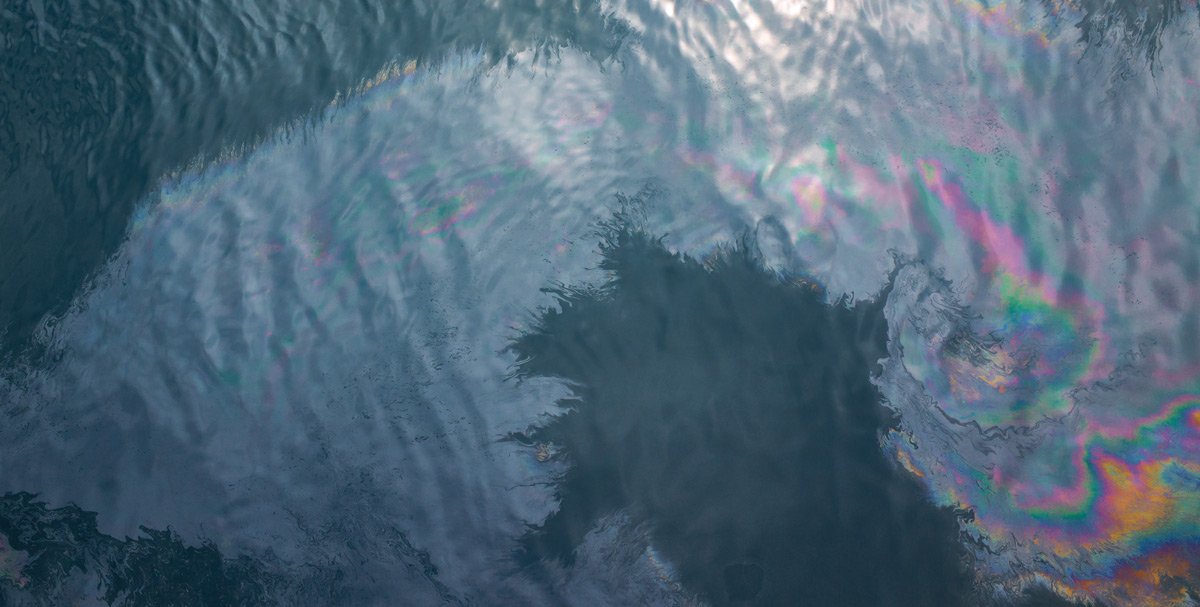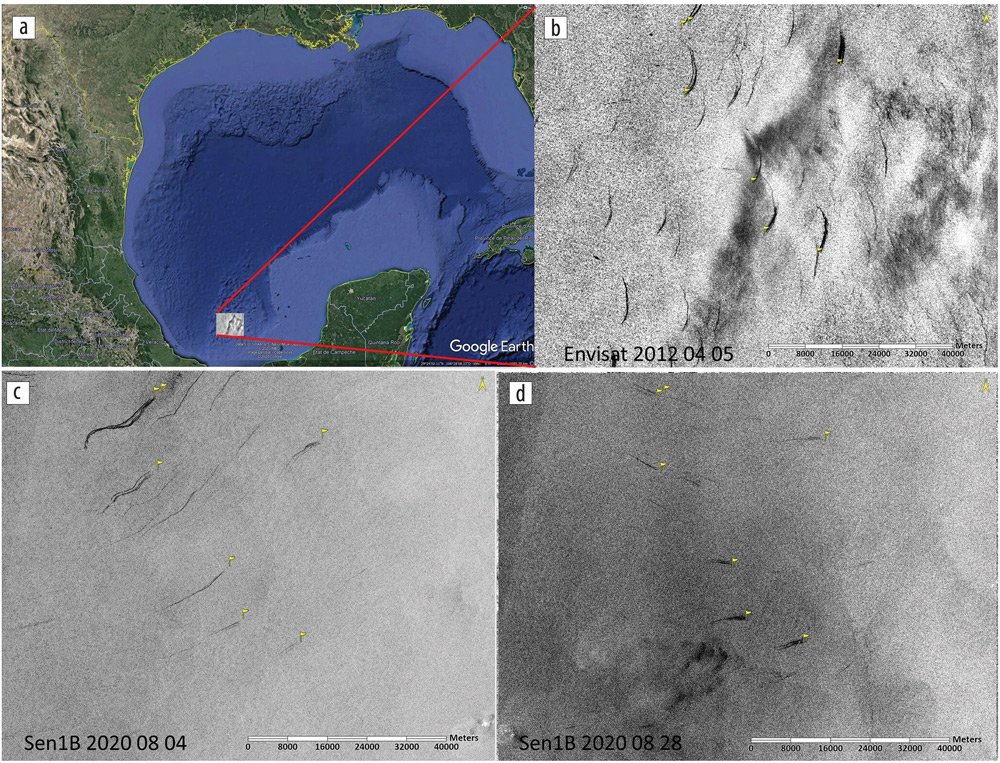Powering Discoveries
Melyssa Fratkin
Related Articles
Slick AI
Detecting oil seepage on the water's surface with Frontera

Energy companies need to be vigilant about the hazards of offshore drilling. Events like BP’s Deepwater Horizon accident and the recent gas leak fire in the Gulf of Mexico cost billions of dollars and make international headlines. But the companies are just as concerned with much smaller — and more common — natural seeps from small holes in the Earth, and small leakages from human activities.
Seepage — slow leaks of hydrocarbons escaping from small holes — is a common problem for geoscientists. It’s imperative for them to know whether an oil slick that appears on the surface of the water is from natural seepage, or from wells or bore-holes that are up to 1 kilometer underwater. At that depth, the source of the seepage is difficult to test. Fortunately, remote sensing techniques are ideal for this task. Satellite imaging, accurate up to a few meters, allows scientists to monitor the surface of the world’s oceans.
This massive collection of imaging data must then be reviewed, and for each possible spill, a company working in the area has to send a boat out to evaluate the situation. Using HPC systems to take in all of the satellite data, and then applying machine learning techniques to locate seepage, could significantly improve the process.

TotalEnergies, a member of TACC’s STAR industrial affiliates program, worked with researchers at the center to develop and train a deep learning system that could automate the detection of surface oil, and distinguish this natural phenomenon from possible leakage from pipelines or oil tankers. The collaboration focused specifically on making the identification process faster, while preserving the accuracy of the predictions.
TACC Research Associates Zhao Zhang and Lei Huang relied on libraries and code they had developed at the center to improve the TotalEnergies workflows, enabling the system to classify more than 40,000 images into different classes, types, and shapes.
Zhang noted that “image segmentation projects, with large libraries of different shapes and sizes, are becoming more common in domain sciences. We were excited to apply what we’ve learned in previous projects to help TotalEnergies accelerate their workflow without sacrificing accuracy.”
Testing for this project was performed on the Frontera supercomputer at TACC, but the workflow was run only on Total’s HPC systems, due to the proprietary nature of the datasets.
“Early detection is essential,” said TotalEnergies researcher Denis Akhiyarov. “While the domain experts provide the ground truth, we want to support them by accelerating and simplifying their workload.”
The company hopes to move toward real-time application of this oil-slick detection process in the future. The machine learning application also represents a cost-savings to the company, because it should cut down on the number of boats or radar sweeps required to verify seepage incidents.
“Machine learning is using an increasing number of cycles on TACC systems,” said Melyssa Fratkin, TACC’s Industrial Programs director. “As our industry partners begin exploring these techniques, we’re pleased to be able to support their efforts, and make a difference for future energy recovery.”
The STAR program promotes the mutually beneficial exchange of ideas and information between industry and academia in advanced computing technologies, while fostering innovation and supporting economic development in the state of Texas and across the nation.
The STAR program promotes the mutually beneficial exchange of ideas and information between industry and academia in advanced computing technologies, while fostering innovation and supporting economic development in the state of Texas and across the nation. For more information, visit: www.tacc.utexas.edu/partnerships/industry.

